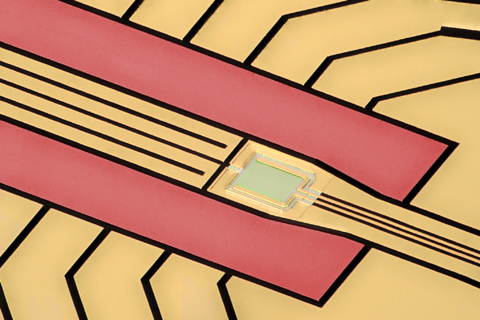Spotlight: Differing Device Personalities Come Together for Future Quantum Computing Networks

We’re building the tools to trap ions and watch them glow (or not).
The art-deco-esque device shown here is a combined trap for ions (charged atoms) and detector for individual photons (particles of light). When you hold an ion in place and hit it with a laser, depending on its quantum state, the ion will either glow and emit photons … or it will do nothing and stay in the dark.
But we aren’t going through this process for a 50/50 chance at a light show.
The glow-or-no-glow odds for ions have a significant impact on the future of computing. Quantum computers can assign values to those two quantum states, similar to the 0s and 1s in the binary system that our classical computers use to operate.
The best practice thus far has been to use a large, custom-built microscope lens and bulky single-photon detector to identify whether a trapped ion glows or not. That’s sufficient on a small scale, but technical problems arise when a quantum computing system needs to keep track of many ions at once (for added processing power). Ions can be out of view, or the image can get distorted.
Not only do NIST researchers have a potential alternative, but they’ve just made it much more realistic.
Our combined ion trap/single-photon detector takes away the need for bulky equipment and maintains the potential for a clear view of all the ions in the system.
Previous iterations faced the challenge of competing personalities. The trap needed large voltages on its electrodes to hold ions in place, while the detector was much more delicate and preferred an environment without large electrical signals.
Now, our team has crafted a version with an aluminum barrier around the bottom of the detector. The ion trap can use large voltages, and the detector can keep its peace. Get the specifics on this NIST innovation in the research paper, published in Applied Physics Letters.
Follow us on social media for more like this from all across NIST!

